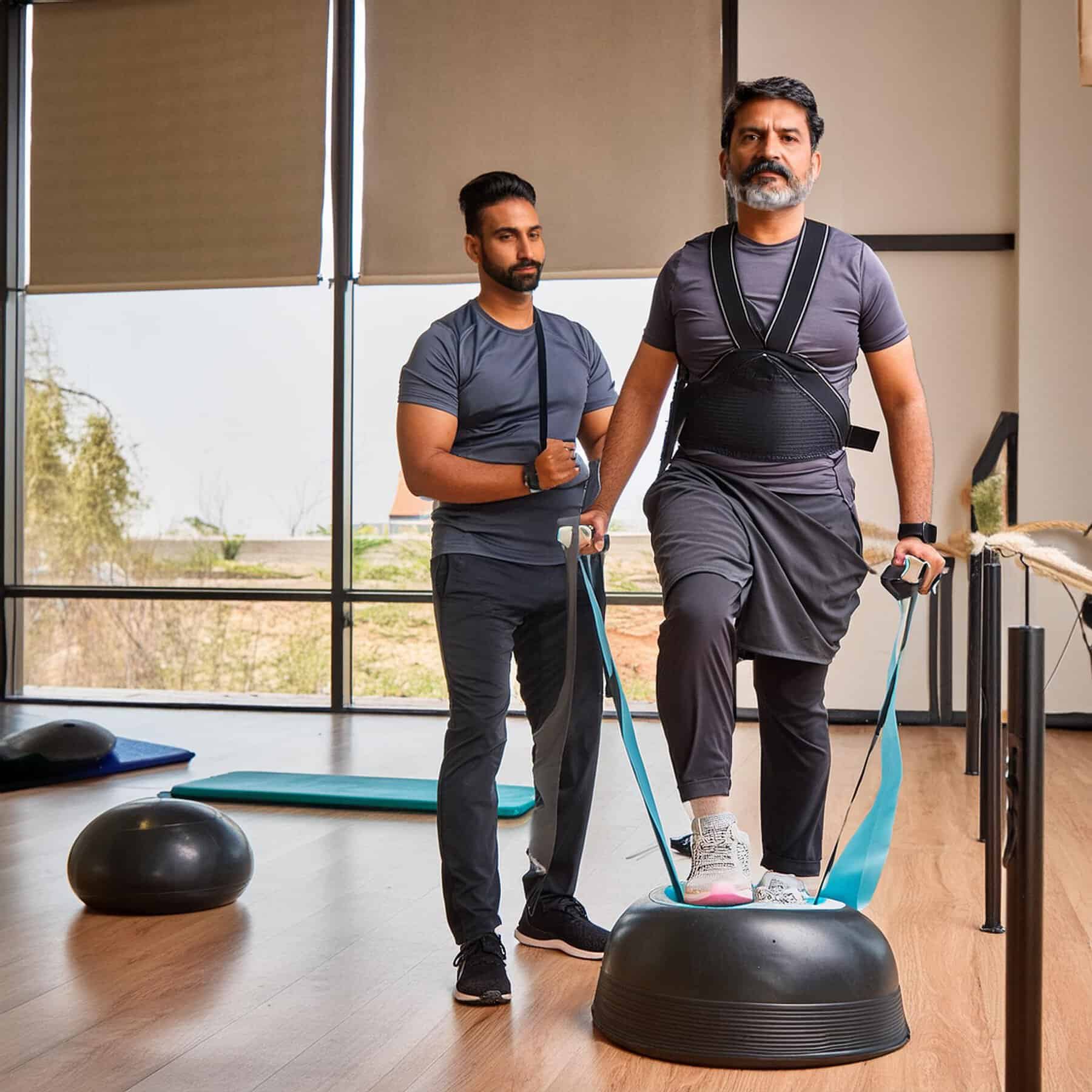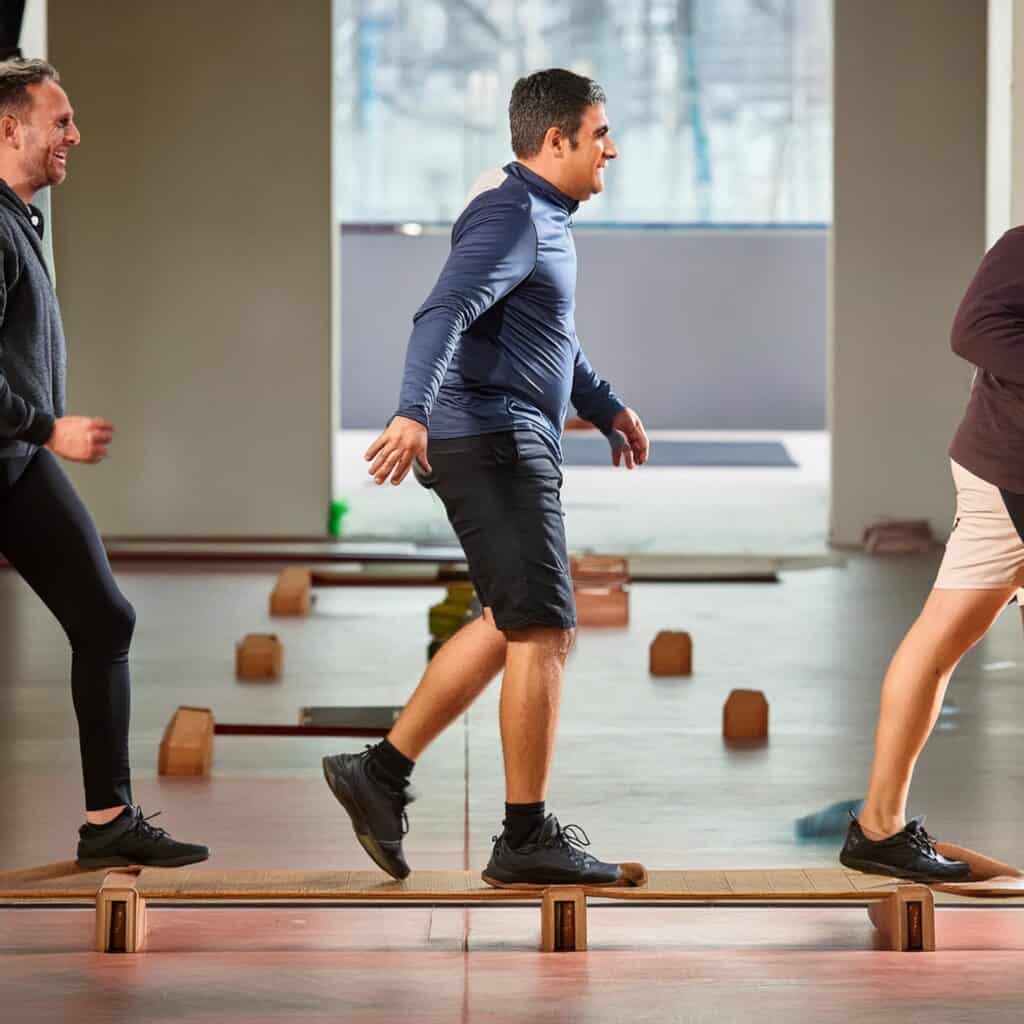The Study of Gait

What does Gait mean?
Simply defined, ‘Gait’ refers to an individual’s manner of walking; it’s a reflection of one’s physical condition, neurological status and biomechanical efficiency. If any of these are impacted due to injury or an underlying medical condition, it could cause an abnormal gait such as dragging your toes, taking high steps or feeling unbalanced while walking. While some gait abnormalities are temporary, others may require lifelong management.
What is the Gait Cycle?
The Gait Cycle is a series of events that takes place from one heel strike to the next heel strike of the same foot. It includes a Stance Phase 60% of the time- when the foot is in contact with the ground, and a Swing Phase 40% of the time- when the foot is in the air.
Each of these phases can be further broken down.
Stages of the Stance Phase:
- Initial Contact: Toe touches the ground.
- Loading Response: Weight begins to transfer onto the limb.
- Mid-stance: Limb supports the body weight.
- Terminal Stance: Heel lifts as the body moves forward.
Stages of the Swing Phase:
- Pre-Swing: Toe prepares to leave the ground.
- Initial Swing: Toe lifts off the ground.
- Mid-Swing: Limb moves forward.
- Terminal Swing: Toe prepares for the next step.
In order to ensure efficient and coordinated locomotion, each phase involves a delicate coordination of muscle activity, joint motion, and balance adjustments.
Gait Analysis:
While it is now clear what Gait and the different phases of the Gait Cycle are, the question now lies as to how this information can be utilised. This is where Gait Analysis comes in. It is the systematic study of walking that evaluates various parameters such as stride length, cadence, stance phase, swing phase, and joint angles. This data further helps us understand biomechanical abnormalities and helps with creating rehabilitation and intervention strategies.
Types of Gait:
Through Gait Analysis, healthcare professionals are able to understand the different types of Gait. This is understanding is crucial as it enables them to accurately diagnose underlying medical conditions and tailor appropriate treatments to improve an individual’s mobility and quality of life.
The types of Gait are:
Normal Gait:
- Symmetrical, efficient, and coordinated walking pattern
- Consists of stance phase (60%) and swing phase (40%)
- Includes heel strike, mid-stance, toe-off, and swing phases
Antalgic Gait:
- Often seen in cases of acute injuries or fractures
- Characterized by a shortened stance phase on the affected side due to pain. Individuals avoid putting weight on the painful limb.
Ataxic Gait:
- Lack of coordination due to cerebellar dysfunction
- Unsteady, irregular walking pattern
- Wide base of support and exaggerated movements to maintain balance
Spastic Gait:
- Typically seen in conditions such as cerebral palsy or multiple sclerosis
- Characterized by stiff, jerky movements due to increased muscle tone (spasticity)
- Legs may cross or scissor during walking due to tight adductor muscles
Scissors Gait:
- Associated with conditions like cerebral palsy
- Legs cross over each other while walking
- Often due to spasticity of hip adductors (a group of five muscles located in the medial compartment of the thigh)
Propulsive Gait:
- Often seen in Parkinson’s disease.
- Stooped, rigid posture with a forward-leaning head and shoulders
- Short, shuffling steps with decreased arm swing
Trendelenburg Gait:
- Caused by weakness or paralysis of the gluteus medius muscle (a large fan-shaped muscle located in the posterior hip)
- Characterized by excessive lateral trunk movement during the stance phase
- Results in a dropping of the contralateral pelvis
Steppage Gait:
- Often seen in conditions affecting the peroneal nerve (nerve that supplies movement and sensation to the lower leg, foot and toes) or dorsiflexor muscles (muscles help the body clear the foot during swing phase and control the foot on heel strike)
- Foot drop leads to excessive hip and knee flexion during swing phase
- Individuals lift the foot higher than usual to clear the ground
Cerebellar Gait:
- Often seen in individuals with cerebellar lesions
- Characterized by a wide-based, staggering walk
- Movements lack coordination and precision
Parkinsonian Gait:
- Small, shuffling steps with reduced arm swing
- Stooped posture with forward-leaning head and shoulder
- Difficulty initiating movement (akinesia) and turning

What is Gait training?
Gait training is a form of physical therapy that aims to improve quality and efficiency of an individual’s manner of walking. It does so by targeting biomechanical abnormalities, muscle weakness, and balance deficits.
Pilates and Gait training:
Pilates exercises improve flexibility, strength and posture. They can complement gait training by targeting core stability, muscle balance, and alignment.
Integrating Pilates into gait training programs can enhance the effectiveness of rehabilitation by addressing underlying musculoskeletal imbalances, improving body awareness, and promoting functional movement patterns. Pilates exercises such as pelvic stabilization, leg strengthening, and balance training can help individuals develop the strength, flexibility, and coordination necessary for a smooth and efficient gait. These exercises also focus on the deep core muscles, lumbo pelvic stability, coordination and balance which play a crucial role in maintaining proper posture and stability during walking.
Additionally, Pilates emphasizes proper breathing techniques and mindful movement, which can enhance proprioception and body awareness, leading to better gait mechanics and reducing the risk of injury.
When Pilates is applied in combination with gait training programs, it can provide a holistic approach to rehabilitation, addressing both physical and neuromuscular aspects of walking and ultimately, improving one’s overall mobility and quality of life.
Co-Author: Sameera Shaikh
A person for whom it took 4 years and a degree in Hospitality to figure out she was in the wrong industry. Sameera is now a seasoned marketer who works in Brand Communications, Strategy and Content while dabbling in freelance content, blog and creative writing.
